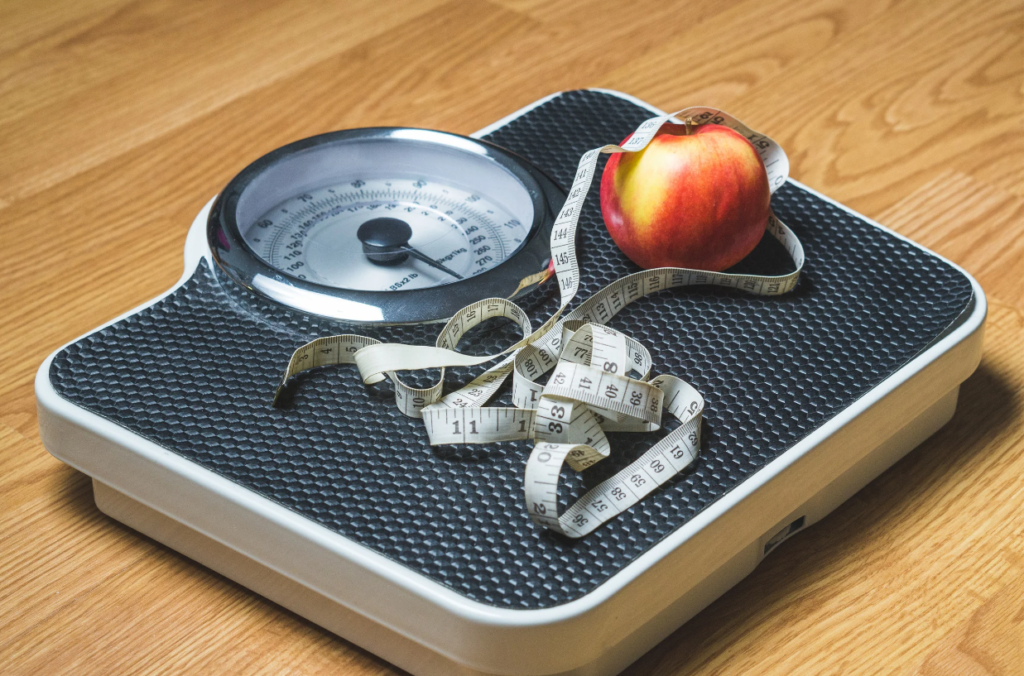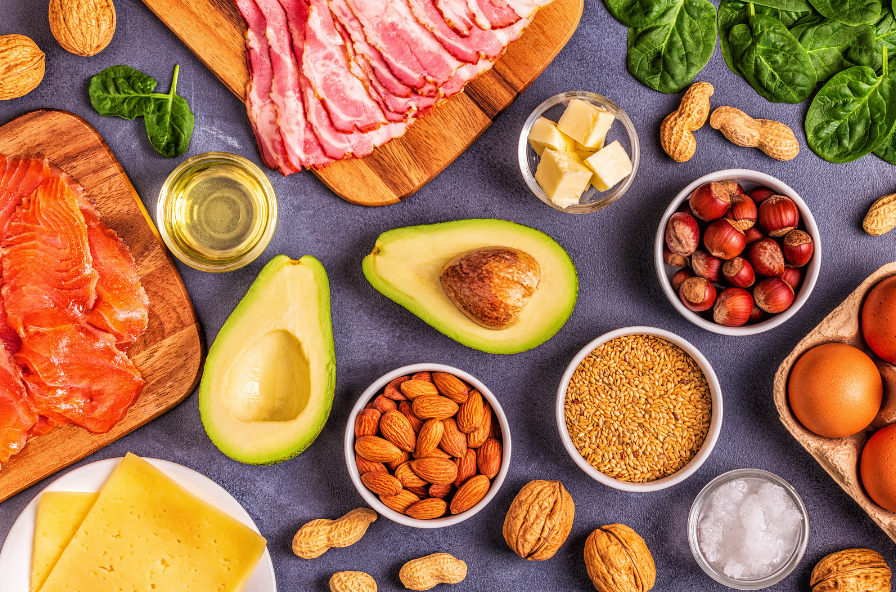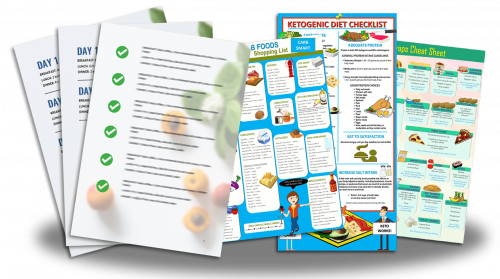Are you tired of struggling with fad diets and ineffective weight loss methods? Are you ready to embark on a journey towards a healthier lifestyle that brings sustainable results? Look no further than a keto meal plan combined with proper fitness and weight loss strategies. This comprehensive approach can help you achieve effective weight loss while improving your overall well-being.
The ketogenic diet, or keto for short, has gained significant popularity in recent years for its remarkable weight loss benefits. By drastically reducing carbohydrate intake and increasing the consumption of healthy fats, the body enters a metabolic state called ketosis. In this state, the body becomes highly efficient at burning fat for energy, resulting in consistent weight loss.

Introduction to Keto Diet
The ketogenic diet, commonly known as the keto diet, is a high-fat, low-carbohydrate eating plan that has gained popularity for its potential to aid in weight loss. The primary goal of the keto diet is to shift the body’s metabolism from utilizing carbohydrates for energy to using fats, thus entering a state called ketosis. This metabolic state enables the body to burn fat more efficiently, leading to weight loss.
Also Read: Beyond the Cocao Nib: Rethinking the Role of Dark Chocolate in Your Diet
Key Principles of the Keto Diet:
- High Fat: The keto diet emphasizes consuming healthy fats such as avocados, nuts, seeds, and olive oil to replace carbohydrates.
- Low Carbohydrate: Carbohydrate intake is significantly reduced, typically to less than 50 grams per day, to force the body to burn fat for fuel.
- Moderate Protein: Protein intake is moderate to support muscle maintenance and overall health, without stimulating excess insulin production.
Benefits of the Keto Diet:
- Weight Loss: By reducing carb intake and increasing fat consumption, the body burns stored fat for energy, aiding in weight loss.
- Improved Blood Sugar Control: The keto diet may help stabilize blood sugar levels, benefiting individuals with diabetes or insulin resistance.
- Enhanced Mental Clarity: Some individuals report increased focus and mental clarity when following a keto diet due to stable blood sugar levels.
The keto diet is not without its challenges, as it requires strict adherence to the principles outlined and may lead to nutrient deficiencies if not properly planned. However, when followed correctly, the keto diet can be an effective tool for individuals looking to lose weight and improve their overall health.
Benefits of Keto Meal Plan for Weight Loss
- Helps in achieving weight loss goals effectively and efficiently.
- Promotes fat burning due to the body being in a state of ketosis.
- Reduces cravings and hunger pangs, aiding in controlling calorie intake.
- Improves insulin sensitivity and blood sugar levels, which is beneficial for individuals with diabetes or prediabetes.
- Boosts energy levels and mental clarity by utilizing ketones as a source of fuel for the brain.
- Supports muscle preservation while losing fat, leading to a leaner physique.
- May help reduce inflammation in the body, potentially benefiting overall health.
- Provides a structured approach to meal planning, making it easier to adhere to dietary goals.
- Can be adapted to individual preferences and dietary restrictions for a personalized weight loss journey.
- Offers a sustainable approach to maintaining weight loss results in the long term.
Also Read: The Ultimate Diet Guide for Men in Their 40s: Lower Your High Cholesterol Naturally
Understanding Macronutrients on Keto
- The ketogenic diet is a high-fat, moderate-protein, and low-carb eating plan.
- Macronutrients are essential components of any diet, including keto, and they include fats, proteins, and carbohydrates.
- On a keto diet, the primary focus is on consuming high amounts of healthy fats, a moderate amount of protein, and very few carbohydrates.
- Fats are crucial on a keto diet as they provide energy and help the body reach a state of ketosis where it burns fat for fuel.
- Good sources of healthy fats on keto include avocados, olive oil, coconut oil, and nuts.
- Proteins are essential for building and repairing tissues in the body, but excessive protein intake can hinder ketosis.
- Opt for protein sources like fish, poultry, and tofu in moderate amounts on a keto meal plan.
- Carbohydrates are restricted on keto to keep blood sugar levels stable and promote fat burning.
- Choose low-carb vegetables like spinach, broccoli, and cauliflower to meet your carbohydrate needs on keto.
- Understanding the role of each macronutrient on a keto diet is crucial for effective weight loss and optimal health.
Building a Balanced Keto Plate
When following a keto meal plan for weight loss, it is essential to create a balanced keto plate to ensure you are meeting your nutritional needs while staying in ketosis. Here are some key tips to help you build a balanced keto plate:
- Protein: Start by incorporating a source of protein into your meal, such as fatty fish, poultry, beef, or tofu. Protein is crucial for muscle maintenance and helps you feel full longer.
- Healthy Fats: Include healthy fats like avocado, olive oil, nuts, or seeds in your meal. Fats are a primary energy source on a keto diet, and they help keep you satisfied.
- Non-Starchy Vegetables: Fill half of your plate with non-starchy vegetables like leafy greens, broccoli, cauliflower, zucchini, or bell peppers. These vegetables are low in carbs but high in vitamins, minerals, and fiber.
- Low-Carb Fruits: If you crave something sweet, opt for low-carb fruits like berries in moderation. They provide antioxidants and vitamins without spiking your blood sugar.
- Hydration: Don’t forget to stay hydrated by drinking plenty of water throughout the day. Hydration is essential for overall health and can help with weight loss.
Remember, the key to success on a keto diet is not just about cutting carbs but also about building a well-rounded and balanced plate that provides you with all the essential nutrients your body needs. By following these tips, you can create satisfying and nutritious keto meals to support your weight loss goals.
Sample Keto Meal Plan for a Day
Below is an example of a keto meal plan for a day to help you understand how to structure your meals while following a ketogenic diet:
- Breakfast:
- Scrambled eggs cooked in butter with spinach and feta cheese.
- Bulletproof coffee: coffee blended with MCT oil and butter.
- Lunch:
- Grilled chicken breast topped with avocado slices and served with a side of mixed greens dressed in olive oil and vinegar.
- Snack:
- Handful of mixed nuts such as almonds, walnuts, and macadamia nuts.
- Dinner:
- Baked salmon with a lemon butter sauce accompanied by roasted asparagus drizzled with olive oil.
- Cauliflower rice pilaf cooked with garlic and herbs.
- Dessert (optional):
- Berries topped with whipped cream sweetened with stevia.
It is important to note that portion sizes and specific ingredients may vary based on individual needs and preferences. Staying within your daily carb limit is crucial for maintaining ketosis and achieving weight loss goals.
Planning ahead and preparing meals in advance can help you stay on track with your keto diet. Remember to drink plenty of water, incorporate low-carb vegetables, and choose healthy fats to fuel your body while following a ketogenic meal plan.
Snack Ideas for Keto Diet

- Hard-boiled eggs: An easy and protein-packed snack that is perfect for keto.
- Cheese slices: Choose full-fat cheese varieties like cheddar or Gouda for a satisfying snack.
- Olives: A low-carb snack packed with healthy fats that can curb your hunger.
- Nuts: Opt for almonds, macadamia nuts, or pecans in moderation as they are high in fat.
- Avocado: Enjoy sliced avocado with a sprinkle of salt for a nutritious and filling snack.
- Greek yogurt: Choose full-fat, plain Greek yogurt and add some berries for a healthy keto snack.
- Cucumber slices: Dip them in guacamole or cream cheese for a refreshing snack.
- Pork rinds: Crispy and crunchy, pork rinds are a great low-carb option for keto dieters.
- Seeds: Pumpkin seeds and sunflower seeds are high in healthy fats and make a convenient snack.
- Beef jerky: Look for sugar-free varieties to enjoy as a protein-rich keto snack.
These snack ideas are convenient and delicious options to keep you satisfied while following a keto meal plan for effective weight loss.
Tips for Success on Keto Diet
- Plan Ahead: Planning meals and snacks in advance can help stay on track and avoid impulsive food decisions.
- Monitor Macros: Keep an eye on the macronutrient ratios to ensure the body stays in a state of ketosis.
- Stay Hydrated: Drink plenty of water to help with digestion and to prevent dehydration, which can be a side effect of the keto diet.
- Incorporate Variety: Explore different keto-friendly foods to avoid boredom and ensure a well-rounded nutrient intake.
- Read Labels: Pay attention to food labels to avoid hidden sugars and unnecessary carbs that could kick you out of ketosis.
- Meal Prep: Prepare meals in advance to have healthy options readily available, especially on busy days.
- Listen to Your Body: Pay attention to hunger and fullness cues to prevent overeating or undereating.
- Seek Support: Join a keto community or enlist the help of a nutritionist for guidance, motivation, and accountability.
“Consistency and patience are key when following a keto diet. Remember, it’s a lifestyle change, not a quick fix.”
Importance of Hydration and Exercise on Keto
Proper hydration is crucial when following a keto meal plan for effective weight loss. Since the body excretes more water on a ketogenic diet, it is essential to stay well-hydrated to prevent dehydration and support various bodily functions. Water is also necessary for fat metabolism, making it an integral part of the weight loss process on keto.
In addition to hydration, incorporating exercise into a keto meal plan can significantly enhance weight loss results. Exercise not only helps burn more calories but also improves overall health and fitness levels. When following a keto diet, engaging in regular physical activity can boost the body’s ability to enter and remain in ketosis, leading to more efficient fat burning.
Including both cardio and strength training exercises in the routine can further optimize weight loss on a keto meal plan. Cardio exercises like running, cycling, or swimming can help increase calorie expenditure, while strength training activities such as weightlifting or bodyweight exercises can build lean muscle mass and boost metabolism.
It is important to strike a balance between hydration, nutrition, and exercise when following a keto meal plan. By staying hydrated and incorporating regular exercise, individuals can maximize the benefits of a ketogenic diet for effective weight loss and overall health improvement.

Overcoming Challenges and Plateaus on Keto
Following a keto meal plan for effective weight loss can come with its challenges and plateaus. Here are some tips to help overcome them:
- Track Your Macros: Keep a close eye on your macronutrient intake to ensure you are in ketosis. This can help you troubleshoot any stalls in your weight loss progress.
- Stay Hydrated: Proper hydration is crucial on the keto diet. It can help curb cravings, prevent fatigue, and support metabolism.
- Incorporate Intermittent Fasting: Intermittent fasting can help break through weight loss plateaus by increasing ketone production and promoting fat burning.
- Add Variety to Your Meals: Eating the same foods repeatedly can lead to boredom and potential nutrient deficiencies. Experiment with new recipes and ingredients to keep things interesting.
- Manage Stress Levels: High-stress levels can impact weight loss progress. Practice stress-reducing activities such as meditation, yoga, or deep breathing exercises.
- Get Sufficient Sleep: Lack of sleep can hinder weight loss efforts by affecting hormones that regulate appetite and metabolism. Aim for 7-9 hours of quality sleep each night.
- Consider Consulting a Professional: If you are struggling to see results or experiencing significant plateaus, consulting a healthcare provider or a registered dietitian with expertise in the keto diet may provide valuable insights and guidance.
By incorporating these strategies, individuals following a keto meal plan can navigate challenges and overcome plateaus to achieve their weight loss goals successfully.
Final Thoughts and Next Steps
- Reflect on Progress: Take some time to reflect on your journey with the keto meal plan. Celebrate your successes and be proud of your commitment to healthier eating habits.
- Adjust as Needed: If you found certain aspects of the meal plan challenging or not as effective, consider making adjustments. Tweak your meals or snacks to better suit your preferences and lifestyle.
- Stay Consistent: Consistency is key to seeing results with any meal plan. Keep up with your keto diet, stay mindful of your carb intake, and continue making healthy food choices.
- Monitor Your Body: Pay attention to how your body responds to the keto diet. Listen to any signals it may be giving you and make adjustments accordingly to ensure you are feeling your best.
- Consult a Professional: If you have any concerns about following a keto meal plan or if you have specific health conditions, it’s always a good idea to consult with a healthcare provider or a nutritionist.
- Set New Goals: Whether you’ve reached your initial weight loss goal or are still working towards it, consider setting new goals to keep yourself motivated and focused on your health and well-being.
- Continue Educating Yourself: Stay informed about the latest research and information on the keto diet. Keep learning about nutrition and how to make healthier choices for your body.
Remember, following a keto meal plan for weight loss is a journey that requires dedication and patience. Keep up the good work and stay committed to your goals for a healthier and happier you.


